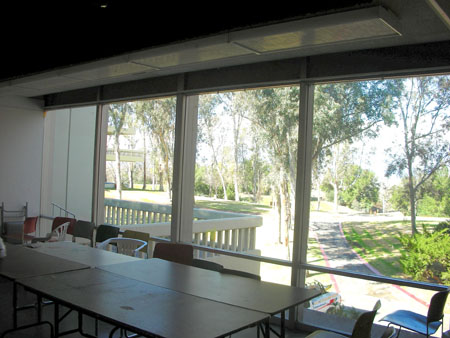
This project furthered particular ideas of the two projects which preceded it: D300/D300a and Cashmere Paw. Coming back to the window wall hallway used as a bridge in the Cashmere Paw work, the beginning investment in continuing the exploration of aspects not yet resolved were addressed; namely, the physical presence of the drywall blocking a window in the stairwell. The turn taken was back to focusing on an artwork in relation to a classroom space as I had previously explored in D300/D300a; in this arrangement not through merging two spaces that sit on equal floor plane, but on an shared wall plane, one space above the other.
While in painting the partition blocking the window in the stairwell resolved my problem in not being able to remove the drywall, I had only thoroughly considered the interior face of that partition for the project's arrangements. My emphasis for here was turned towards the exterior side of the drywall, a side which one usually does not have the privilege of viewing, but is offered one in this situation as there is the window to look through, if only to see a wall a few inches beyond it.
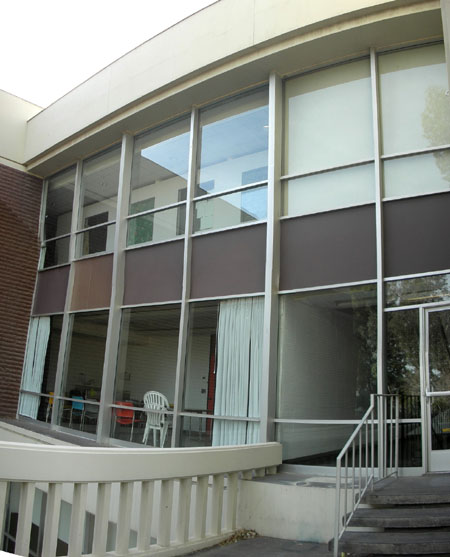
The semester this project took place had me in the classroom (C202) directly below the hallway for a critique course. As most of my projects occur at various times under complicated circumstances, nuanced to formalized exhibition conduct, I most often presented documentation of previous physical instances for critical discussion rather than presenting a soldification of a process. I decidedly chose to use the opportunity of my enrollment in this particular critique course to provide an engagement to discuss then and there the discussion.
On each floor of the building where a window as wall stands remain existing tracks where curtains were once installed. While most window-walls throughout the building that serve as hallway spaces do not have curtains up any longer, certain classrooms with windows had continued to use them or have substituted for venetian blinds and other methods. For the duration of the critique held on my work in this classroom I installed the curtains found therein in the hallway directly above it.
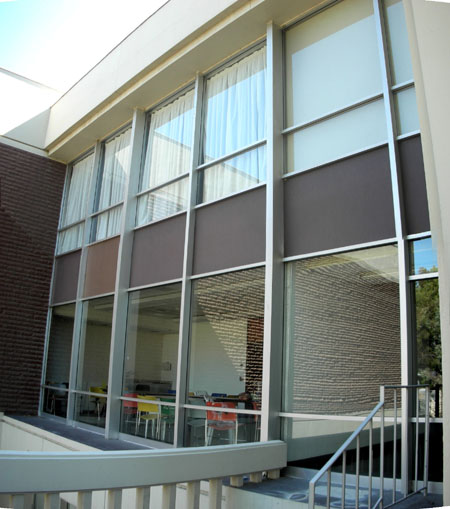
The exterior appearance of this portion of the building from the ground provided a temporal solution to the irritated formal continuity made by the partition wall blocking the window. Simultaneously, a fluid and contained leveling across the expanse of window space on the third floor while simultaneously opening the classroom to as much light as would enter during the critique discussion.
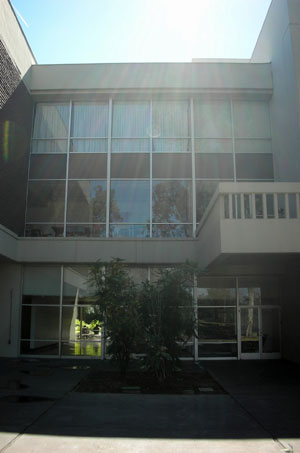
The interior side of the curtain acted in the way a closed curtain functions through blocking natural light. While this drastically changed the hallway, the strongest position the curtain had over the partition was that it could be opened if necessary.
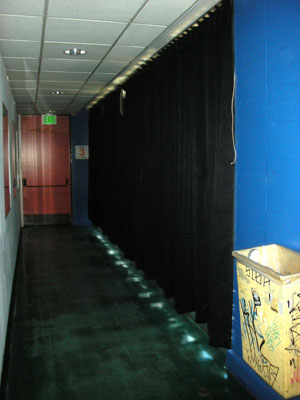
Whereas in the classroom, the curtains would have served any prior time for me as a way to block the exterior light so I could project images of a previous work onto the wall, I let the projection of light come from a wall itself, which would take to directing the work in discussion.
